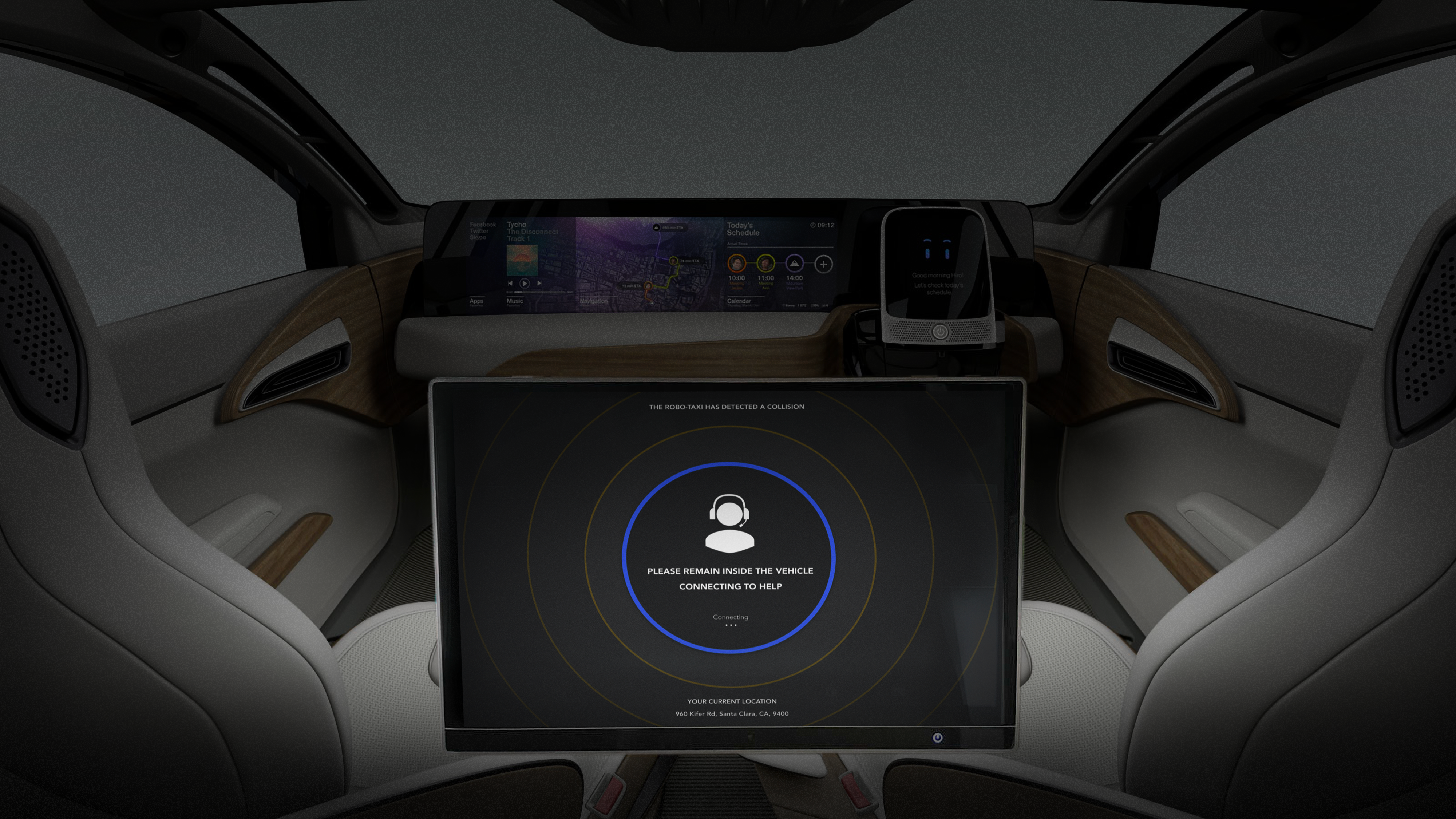Robotaxi Communication Platform
This project was born from the question of how does one interact with an autonomous vehicle? Imagine the ubiquitous future robotaxi fleet: major cities have widely-adopted robotaxis, but these driverless vehicles still share the road with private drivers of conventional road users. What happens when there is an accident? How does one communicate with the robotaxi? How can the robotaxi communicate with other users?

This project explored user journeys for an emergency context involving a robotaxi and a human driver of a private vehicle. I led the development of web apps using React, NodeJS, and the Twilio API, to prototype journeys for the passenger of the robotaxi (primary user), the private vehicle operator (secondary user), and first responders. This prototype was intended as a live, on-road demo to CXO’s of Nissan and Renault. I worked with a design intern and senior researchers to ideate user journeys, scenarios, and service protocols.
The web apps ran on iPads, which acted as a placeholder for future display technologies. One iPad was mounted in the interior for the backseat passenger, the other on the driverside window’s exterior. NodeJS facilitating the backend, with ngrok to create a tunnel for the app to access the web.